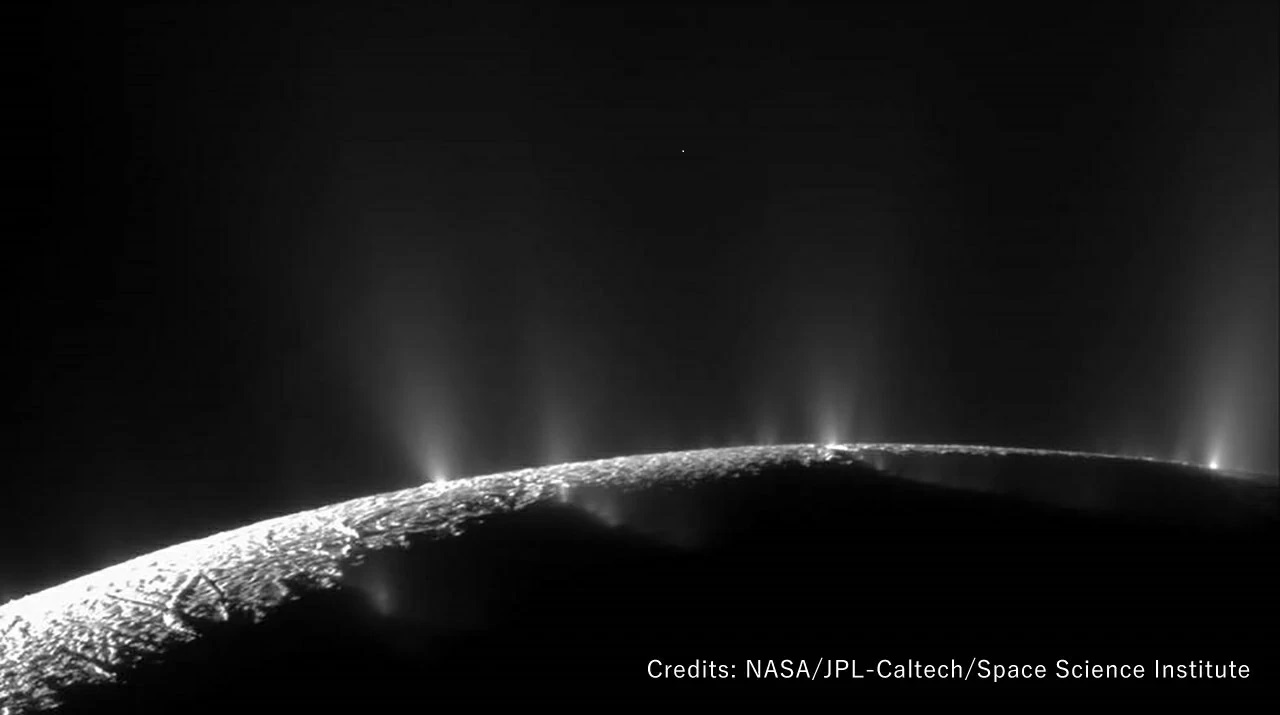Earth and Planetary Sciences News
NASA Cassini Data Reveals Building Block for Life in Enceladus' Ocean

The icy crust at the south pole of Enceladus exhibits large fissures that allow water from the subsurface ocean to spray into space as geysers, forming a plume of icy particles. NASA's Cassini spacecraft, which captured this imagery in 2009, sampled those particles to reveal the chemicals contained in the ocean.
Phosphorus, a key chemical element for many biological processes, has been found in icy grains emitted by the small moon and is likely abundant in its subsurface ocean.
Using data collected by NASA's Cassini mission, an international team of scientists [including Tokyo Tech Earth-Life Science Institute researchers Yasuhito Sekine, Kento Furuya and Shuya Tan] has discovered phosphorus – an essential chemical element for life – locked inside salt-rich ice grains ejected into space from Enceladus.





